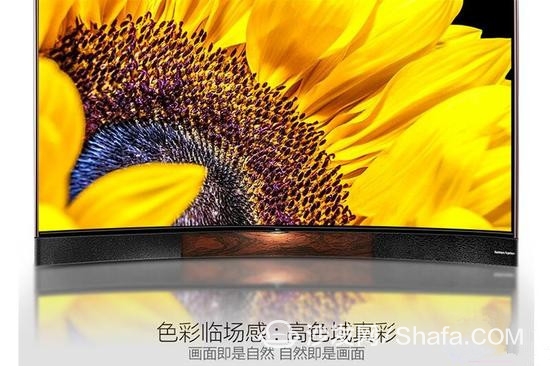In 2016, smart TV products are still rapidly evolving, and innovations and enhancements have been made in terms of the design of the body, operating functions, and processor configuration. But for smart TV products, the most important thing is the viewing effect, so smart TV display technology is particularly important! What are the latest display technologies for smart TVs in 2016? Which display technology presents better picture quality? Brings together a summary of current popular display technologies to help users better choose smart TV products.
Today, we will talk about the major display technologies that affect the quality of television.

What are the smart TV display technologies
OLED display technology
The OLED panel has superior color expression and its image response speed is faster. The mainstream product response time is only 0.001ms, less than one thousandth of the LCD panel, watching high-speed motion picture is very colorful. Moreover, OLED display technology has self-luminous characteristics, so it is more profound and natural in color performance. The self-illuminating OLED panel black can be black and has infinite contrast, which solves the problem of LCD TV light leakage.
At the same time, thanks to the excellent characteristics of OLED panels without backlighting, OLED TVs can be made thinner and lighter than LCD TVs. Can achieve 4mm or even 1mm limit ultra-thin design, and easy to bend, is a natural partner of high-end curved TV.

Quantum dot display technology
As we all know, the current high-end TVs are divided into two camps: the OLED camp and the quantum dot LCD panel camp, and each has a lot of TV manufacturers. Quantum dot display technology is a high-end killer that is currently in line with OLED display technology. By improving the existing liquid crystal panel technology, it does not lose OLED in color performance, and also has better control over cost control and panel yield.
Compared with traditional LED backlights, quantum dot display materials can stimulate the generation of ultra-high-purity color spectrums, leading to a revolutionary new revolution in picture quality. It allows the display's gamut coverage to reach a staggering 110% and can see many of the color details that cannot be displayed on traditional television. In addition, its light source is low in power consumption, health and environmental protection, and the service life of the TV is even longer.

HDR display technology
The 4K ultra-high-definition screen of the hot blowout in the past two years is about the resolution of the TV. The HDR technology emphasizes the perception of the human eye and the improvement of the image quality. The human eye's perception of brightness is very wide, ranging from a few thousandths of a nit to several million nits. The quality of the image perceived by the human eye is ultimately closely related to the range of brightness that is ultimately displayed on the output side of the image. The so-called dynamic brightness range, we can understand it as the area between the highest brightness and the lowest brightness of the picture.
The range of brightness that traditional TVs can exhibit is extremely limited, and is far from the range that human eyes can perceive. The reason is that the brightness of the traditional TV in the bright picture can not be put up, and the dark place will not come down. Caused by the human eye is ultimately perceived as a poor sense of the level of the picture, a large number of details are lost. HDR super display technology is to solve this problem came into being.

Smart TVs equipped with HDR technology can expand the dynamic range of brightness and display images that are similar to the dynamic range that human eyes can perceive, resulting in a more realistic and outstanding picture quality. The core of TV HDR technology is to increase the brightness of the picture and control the brightness of the dark part of the picture, thereby enhancing the contrast between the dark and bright pictures.
MEMC Motion Enhancement Technology
Although OLED display technology has excellent motion picture performance, but the cost of OLED panels is very high, only a few high-end TVs are used, the price is too high, there is no cost to speak of, belong to light luxury category, more suitable for high-end people. For ordinary users, LCD TVs are still the best choice.
MEMC sports enhancement technology is a good friend of LCD TV sports. Special motion compensation technology is used to add motion compensation frames through the dynamic image system to effectively eliminate blurring, smearing, and shaking of the screen, which can make the motion picture of the LCD TV clearer and smoother. When you are watching sporting events and racing sports, there is no feeling of procrastination and hard to see.

Xiao Bian just wants to say: In the past, buying smart TVs mainly depends on the size, and the size of the TV sets becomes the best standard for distinguishing high-end and low-end TVs. In recent years, the rapid development of television display technology has made the picture quality of television become one of the most important points to pay attention to when purchasing TV. A smart TV with good color performance can display more details of the picture, and it is closer to the picture under the real shooting scene, bringing an immersive appeal.
Small Spray Water Atomization,Small Spray Water Atomization Filter Mesh,Small Spray Filter Mesh
SHAOXING HUALI ELECTRONICS CO., LTD. , https://www.cnsxhuali.com